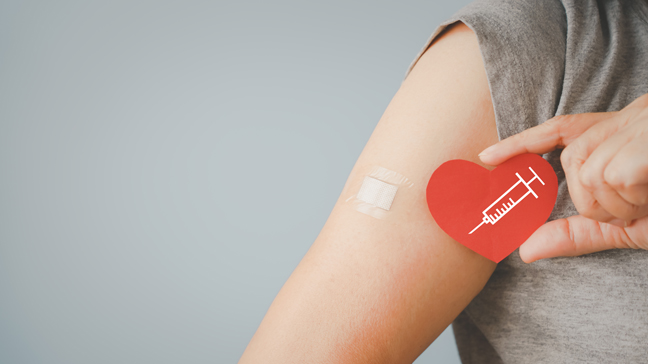- Diseases
- Acoustic Neuroma (16)
- Adrenal Gland Tumor (24)
- Anal Cancer (70)
- Anemia (2)
- Appendix Cancer (18)
- Bile Duct Cancer (26)
- Bladder Cancer (74)
- Brain Metastases (28)
- Brain Tumor (234)
- Breast Cancer (726)
- Breast Implant-Associated Anaplastic Large Cell Lymphoma (2)
- Cancer of Unknown Primary (4)
- Carcinoid Tumor (8)
- Cervical Cancer (164)
- Colon Cancer (168)
- Colorectal Cancer (118)
- Endocrine Tumor (4)
- Esophageal Cancer (44)
- Eye Cancer (36)
- Fallopian Tube Cancer (8)
- Germ Cell Tumor (4)
- Gestational Trophoblastic Disease (2)
- Head and Neck Cancer (14)
- Kidney Cancer (130)
- Leukemia (342)
- Liver Cancer (50)
- Lung Cancer (286)
- Lymphoma (278)
- Mesothelioma (14)
- Metastasis (30)
- Multiple Myeloma (100)
- Myelodysplastic Syndrome (60)
- Myeloproliferative Neoplasm (6)
- Neuroendocrine Tumors (16)
- Oral Cancer (102)
- Ovarian Cancer (178)
- Pancreatic Cancer (160)
- Parathyroid Disease (2)
- Penile Cancer (14)
- Pituitary Tumor (6)
- Prostate Cancer (150)
- Rectal Cancer (58)
- Renal Medullary Carcinoma (6)
- Salivary Gland Cancer (14)
- Sarcoma (238)
- Skin Cancer (300)
- Skull Base Tumors (56)
- Spinal Tumor (12)
- Stomach Cancer (66)
- Testicular Cancer (28)
- Throat Cancer (92)
- Thymoma (6)
- Thyroid Cancer (100)
- Tonsil Cancer (30)
- Uterine Cancer (86)
- Vaginal Cancer (18)
- Vulvar Cancer (22)
- Cancer Topic
- Adolescent and Young Adult Cancer Issues (22)
- Advance Care Planning (12)
- Biostatistics (2)
- Blood Donation (18)
- Bone Health (8)
- COVID-19 (360)
- Cancer Recurrence (120)
- Childhood Cancer Issues (120)
- Clinical Trials (628)
- Complementary Integrative Medicine (22)
- Cytogenetics (2)
- DNA Methylation (4)
- Diagnosis (238)
- Epigenetics (6)
- Fertility (62)
- Follow-up Guidelines (2)
- Health Disparities (14)
- Hereditary Cancer Syndromes (128)
- Immunology (18)
- Li-Fraumeni Syndrome (8)
- Mental Health (122)
- Molecular Diagnostics (8)
- Pain Management (62)
- Palliative Care (8)
- Pathology (10)
- Physical Therapy (18)
- Pregnancy (18)
- Prevention (936)
- Research (390)
- Second Opinion (78)
- Sexuality (16)
- Side Effects (616)
- Sleep Disorders (10)
- Stem Cell Transplantation Cellular Therapy (216)
- Support (408)
- Survivorship (328)
- Symptoms (182)
- Treatment (1788)
Should you get a home HPV test?
4 minute read | Published August 18, 2021
Medically Reviewed | Last reviewed by an MD Anderson Cancer Center medical professional on August 18, 2021
Home HPV tests are marketed as a convenient, accurate and discreet way to find out if you have human papillomavirus, a common infection that can lead to six cancers, as well as genital warts.
But should you skip the doctor visit and rely on a home test for this information? Our expert says no.
Home HPV tests are not approved by the Food and Drug Administration (FDA). There are ongoing studies to see if taking a sample at home and mailing it in yields accurate results.
“We believe at-home HPV testing is the future, but at this point, we would not recommend doing home testing,” says gynecologic oncologist Kathleen Schmeler, M.D.
Still want to take your chances with a mail-in HPV test? Here’s what Schmeler wants you to know.
Home HPV tests are not yet proven to be accurate
To perform an HPV test, your doctor takes a swab of your cervix to get a sample of cells from that area. That sample goes into a machine that tests for the presence of HPV. HPV testing is often combined with a Pap test, where a pathologist will look at that same sample under a microscope for abnormal cells that could indicate cancer or pre-cancer. The results of both tests are interpreted together to determine if further testing or treatment is needed.
Researchers have found that when women perform their own swab – called self-sampling – the HPV tests from those swabs are just as accurate as tests performed on swabs taken by a doctor. In other words, self-sampling, when done correctly, yields accurate results. But that’s not the whole story, says Schmeler.
“There’s a big jump from self-sampling in a controlled setting to getting a kit off the internet, taking a self-sample in your home and then mailing in the sample to be tested,” she says.
HPV tests are highly accurate, and self-sampling in a controlled environment is also accurate. But more research is needed to determine if self-sampling at home through mail-in testing works.
You may not even need testing for HPV
Just like mammograms and other screening tests, there are specific recommendations for HPV testing. That’s because the test is considered a preventive cervical cancer screening.
Virtually all cervical cancers are caused by HPV. Screening for cervical cancer begins at age 21, with a Pap test recommended every three years until age 29. For women age 30 or older, the recommendation is for HPV testing with an optional Pap test every five years.
HPV testing is not recommended before age 25. This is because more than 80% of people are infected with HPV at some point in their lifetime, usually in their teenage years or early 20s. Most people never know they had an HPV infection since the immune system clears the virus.
“Getting tested outside the recommended guidelines is unnecessary and may result in anxiety and confusion, or worse a delay in appropriate care,” says Schmeler.
It’s important to note that HPV also causes throat, penile and anal cancers in men. There is no approved HPV screening for men, even by a doctor. So, beware of tests that offer HPV screening for males outside of a clinical trial.
HPV testing shouldn’t be combined with at-home testing for other sexually transmitted infections
Some at-home HPV testing kits lump HPV testing in with other tests for sexually transmitted infections.
“Testing for chlamydia, gonorrhea, syphilis and other sexually transmitted infections follows specific guidelines based on age, symptoms and/or know exposure,” says Schmeler. “Screening for HPV is very different. It is a cancer screening test and not recommended for women under age 25; whereas, these other tests are.”
You need a doctor to help you understand and act on the results
A positive HPV test result can be alarming, but it doesn’t mean you have cancer. It does require follow-up with a health care provider, though.
“You should never do a test if you don’t have a health care provider to go to if your results are abnormal,” says Schmeler. “You have to have a plan for interpretation of the results and follow-up.”
If you do wind up in a doctor’s office after a positive mail-in result, they may need to repeat the test as well as perform additional tests.
“I think self-sampling at home is the future, and we’re very excited about it. But it needs more study,” says Schmeler. “There’s a reason the at-home HPV test kits are not FDA-approved yet.”
It is also important to note that if a woman is having symptoms such as abnormal bleeding, discharge or pain, she should see a health care provider for an examination rather than perform an at-home test for HPV or other infections.
The HPV vaccine saves lives
The best protection for both men and women against HPV and related cancers is the HPV vaccine. All males and females ages 9-26 should get the HPV vaccine. It is most effective when given at ages 11-12. Unvaccinated men and women ages 27-45 should also talk to their doctor about the benefits of the vaccine.
“We are so fortunate to have a safe and effective vaccine to prevent HPV-related cancers in both men and women,” Schmeler says.
Request an appointment at MD Anderson online or by calling 1-855-371-6974.

I believe at-home HPV testing is the future, and we’re very excited about it. But it needs more study.
Kathleen Schmeler, M.D.
Physician





